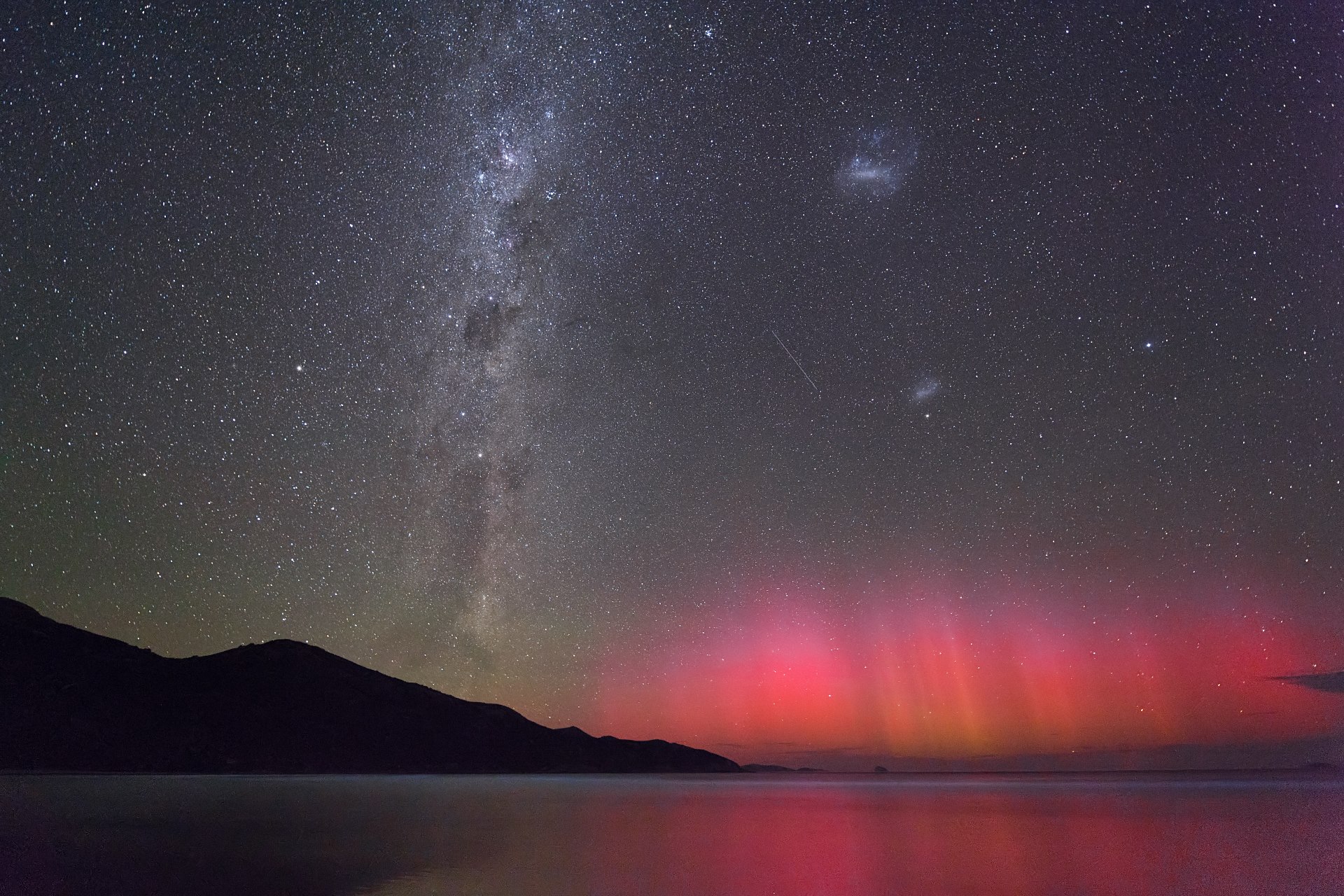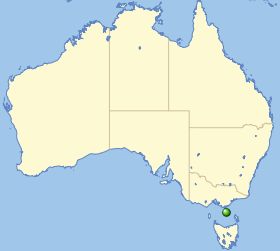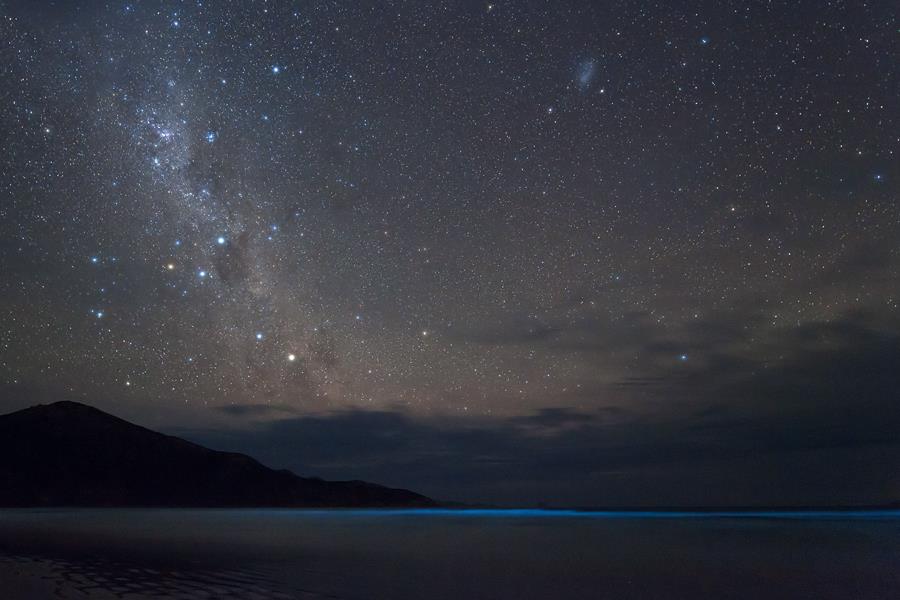A coronal mass ejection, or CME, triggered by storms on the sun hit Earth’s magnetic field on January 17, 2013. It lit up the Arctic and Antarctic regions of Earth with auroras. Southern Hemisphere astrophotographer Colin Legg – who calls himself “a geologist by day and photographer by night” – captured this scene shortly after the CME struck. He wrote on his Facebook page:
Here is the view three minutes after the CME impact … or at least after I first saw colour on the back of the camera. The KP index got to 5 around this time. A couple of minutes later things died down. I could see the curtains naked eye, slowly moving, and would have liked to use a shorter exposure to freeze the motion. Interesting that the colour was pinker at this stage than later on.


The setting for this photo is Wilsons Promontory National Park, commonly known as Wilsons Prom or The Prom. It’s located in southern Australia.
Wilsons Prom is a well-known site for seeing bioluminescence, which, in this case, is light emitted by tiny organisms living in the sea. Bioluminescent life forms make their own light and carry it in their bodies. Fireflies are another, perhaps more commonly seen example. In the oceans of our world, many creatures are bioluminescent. Just as fireflies use their lit-up abdomens to send mating signals and other forms of communication, so bioluminescent creatures of the deep use their internal ability to create light to warn or evade predators, lure or detect prey, and communicate between species members.
See more amazing photos at Colin Legg’s website

Bottom line: Rare photograph from astrophotographer Colin Legg of the aurora australis – southern lights – and bioluminescence. Photo taken at Wilsons Promontory in southern Australia in January, 2013.











